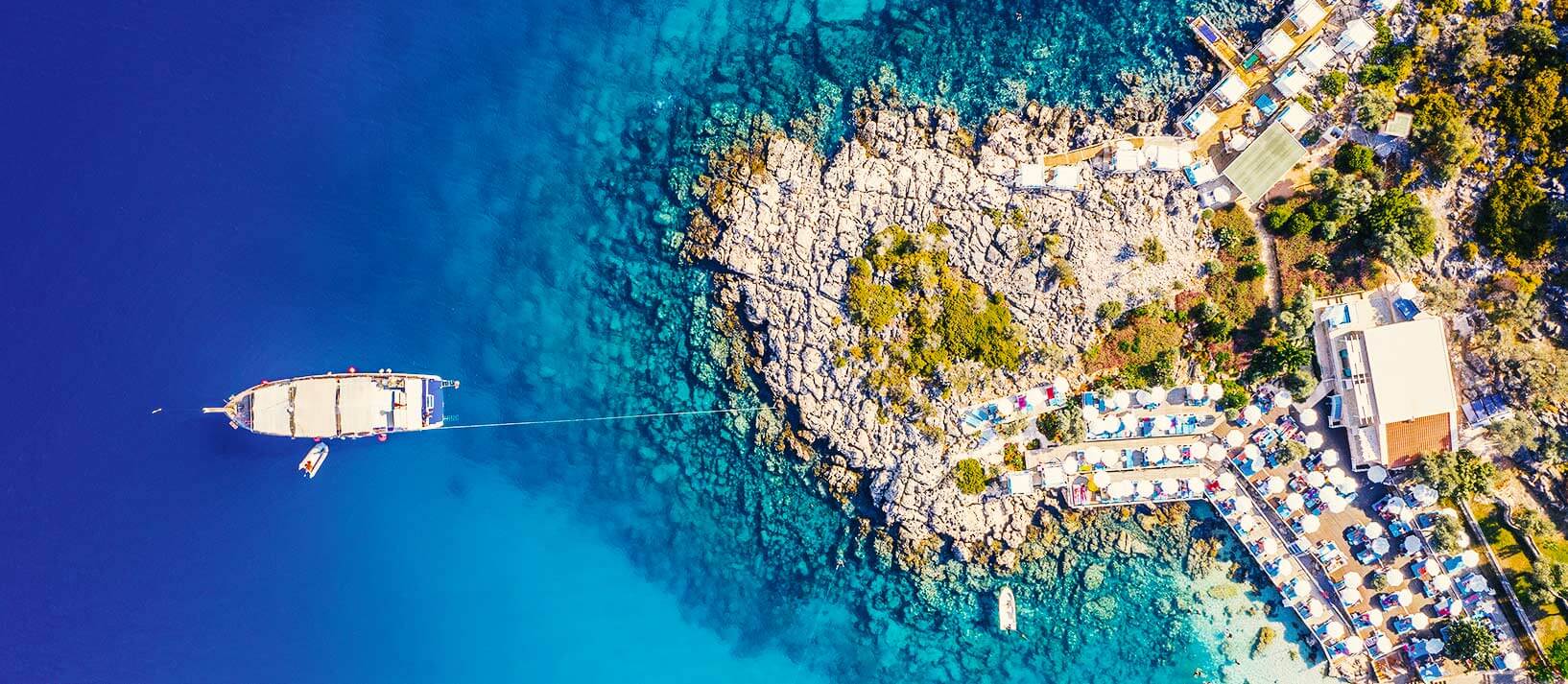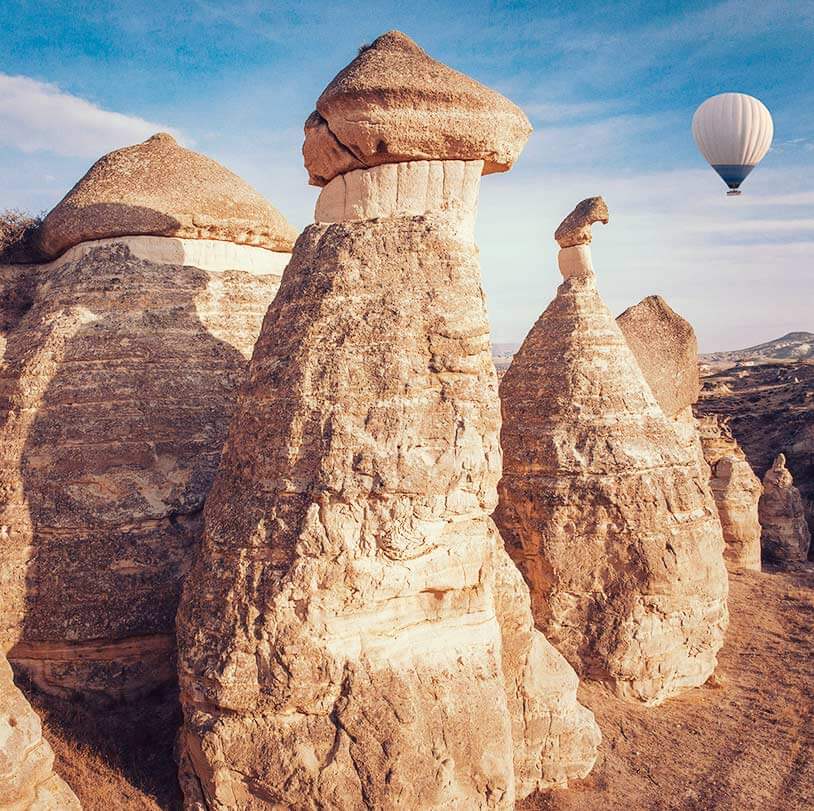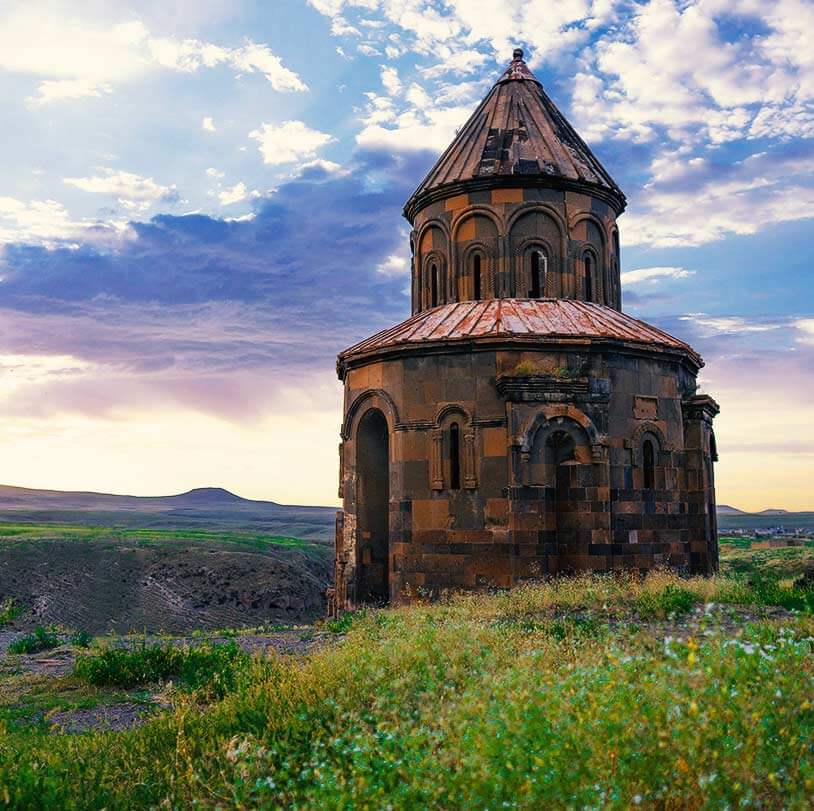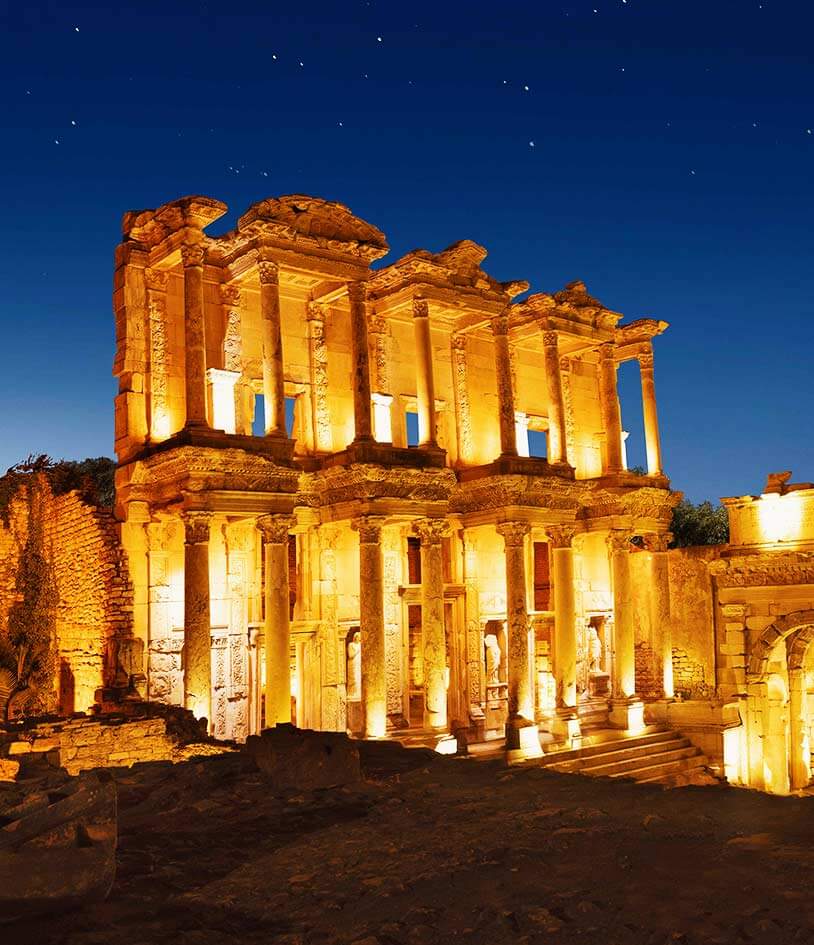Spring

Visit İstanbul’s beautiful flower festivals
During the spring, İstanbul bursts into life with tulip displays carpeting the city’s parks and avenues. April’s İstanbul Tulip Festival sees millions of flowers bloom in Emirgan Park, Gülhane Park.
Beyond the floral displays, spring is ideal for exploring İstanbul’s iconic landmarks before the summer crowds descend. Stroll along the Bosphorus, visit the Hagia Sophia under clear skies, and unwind in the charming cafes of Balat or Karaköy.
The weather is warm but not stifling, making it perfect for urban adventures. Spring is also a fantastic time to explore İstanbul's vibrant food scene.
Rooftop restaurants buzz with life as diners crowd to enjoy tasty grills and various meze spreads.
Summer

Hit the Turquoise Coast’s sun-soaked shores
Türkiye’s Mediterranean coast is the ultimate summer holiday playground.
The Turquoise Coast, also known as the Turkish Riviera, stretches from Fethiye to Antalya and features crystal-clear waters, hidden coves, and ancient ruins perched on seaside cliffs. Ölüdeniz’s famous Blue Lagoon is a must for sunseekers, while Kaş offers vibrant diving spots.
For those seeking a luxurious break, Bodrum’s chic beach clubs and resorts offer a stylish way to relax and unwind, as well as offering some of the country’s most upscale bars and restaurants.
Those seeking a more active holiday can hike sections of the Lycian Way, where coastal paths wind past ancient tombs and hidden bays. For a memorable cultural experience, don’t miss the ancient city of Myra, home to Lycian rock tombs and the Church of St. Nicholas.
Autumn

Explore the surreal landscapes of Cappadocia
Cappadocia’s landscapes are enchanting year-round, but visiting in autumn means the chance to see the region’s iconic fairy chimneys and cave dwellings glow in the seasonal golden light.
For a unique experience, spend a night in one of Cappadocia’s iconic cave hotels, where stone-carved rooms offer cosy, atmospheric stays. Enjoy a traditional Turkish breakfast on a rooftop terrace, where you can watch dozens of hot air balloons rise above the valleys at sunrise. And Autumn’s clear skies mean superb conditions for breathtaking views if you’re considering taking a balloon ride yourself.
The Göreme Open Air Museum is also a must-visit for visitors to this UNESCO World Heritage-listed site. Many of the rock-cut churches and monasteries here date back to the 10th century, and their well-preserved frescoes and carvings are a magnificent showcase of Byzantine art.
Vineyards in Ürgüp and Göreme come alive with grape harvest festivals at this time of year, while the cooler temperatures make it the perfect time for hiking in the Ihlara Valley or exploring the underground cities of Derinkuyu and Kaymaklı.
Winter

Revel in Kars and Eastern Türkiye’s snowy magic
When winter arrives, the town of Kars transforms into a snow-covered wonderland. Located in Türkiye’s far northeast, Kars is famed for its stunning multicultural architectural styles and proximity to the ancient ruins of Ani,the city of a thousand and one churches, an atmospheric UNESCO World Heritage Site often blanketed in snow at this time of year.
In addition to Kars’ historic streets and nearby ruins, winter visitors can explore Çıldır Lake, which freezes over during the colder months. Locals fish through the ice, and visitors can join in to experience this centuries-old tradition or take a horse-drawn sleigh ride across the frozen lake.
The region’s crowning jewel in winter is the Eastern Express, a scenic train journey from Ankara to Kars that winds through frozen rivers, snow-dusted forests, and remote mountain villages. It’s a bucket-list-worthy trip for those seeking cinematic winter landscapes.
For skiers and snowboarders, Palandöken Ski Resort in Erzurum offers excellent slopes and affordable luxury, with modern facilities and stunning views.
Year-round charm

Head back in time at Ephesus
Even if your schedule doesn’t fit neatly into seasonal trends, it’s always a good time to visit Ephesus’ ruins. This remarkably preserved ancient city offers a glimpse into Roman history with its imposing temples and ornate statues.
The iconic Library of Celsus, with its grand façade and carved columns, once held thousands of scrolls, showcasing Ephesus as a hub of learning and culture.
Visiting early in the morning or late afternoon is ideal for avoiding crowds and enjoying a peaceful atmosphere, while during summer the site is beautifully illuminated and kept open until midnight. Comfortable shoes are a must, as the marble streets can be slippery.